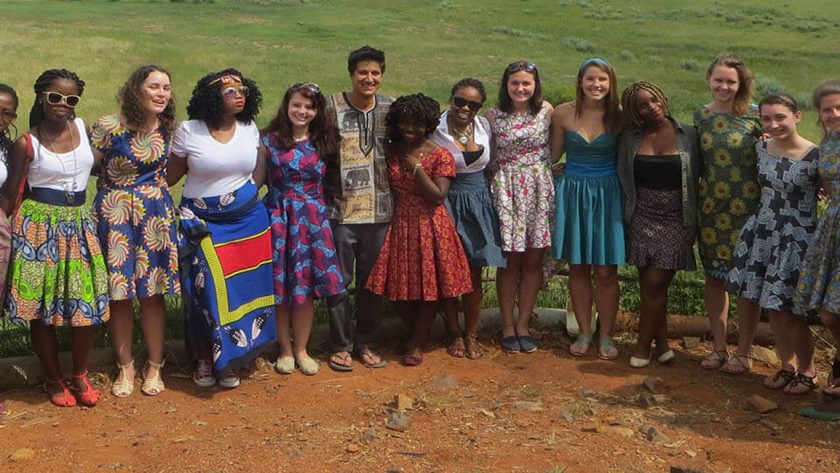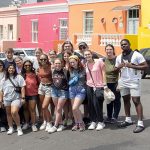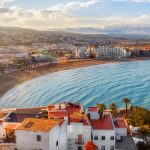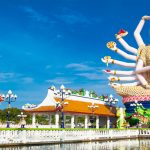Dawn breaks and we’re gathered on the shores of Lake Tanganyika, the largest rift valley lake in East Africa. We’re up at this ungodly hour of the morning not for our usual research preparations but for a bit of a holiday. Though our limbs are heavy with the memory of sleep, the air is filled with expectation. We are setting out to visit the illustrious Gombe National Park in Tanzania, the very same strip of forest where Jane Goodall lived, fraternized with and studied her equally famous chimpanzees. This isn’t your typical “classroom comes to life” moment. This is a rare chance to visit our closest animal cousins in their natural environment not from behind the faux-rock retaining wall of our local zoo.
Back up, you say? What are you doing smack dab in the middle of the African continent in the first place? This past summer I was selected, along with a handful of American students, to participate in the Nyanza project, one of the many Research Experiences for Undergraduates funded by the National Science Foundation. This project highlights the importance of interdisciplinary studies by bringing together students of geology, biology and limnology. It is only through a fully integrated approach that the research and conservation needs of an area can be properly addressed. This program is designed to make us aspiring young scientists more aware of the fact that our disciplines did not exist in a vacuum and that a broad knowledge of all the factors that affect a system is vital to understanding it. Another unique aspect of Nyanza was its commitment not only to diversifying our minds scientifically but to bridging social and cultural gaps – half of the participants were students hailing from Tanzania, and Kenya’s top universities. We are at Lake Tanganyika not only to learn about science but about each other.
The calm water stretches out before us beneath a gray and unpalatable sky. Something is missing; the vastness of the lake calls up images of the ocean. I expect to feel the spray of waves and the sting of salt. The air is instead filled with the nauseating diesel smell of a running motor. After obediently donning our orange life vests, we file onto our ticket up the coast-a traditional wooden fishing boat retrofitted with an outboard motor. We take care to settle ourselves evenly so as to not upset the boat’s tenuous balance, sit back to enjoy the passing scenery. Several watersheds empty themselves into Lake Tanganyika. Fishing villages have sprung up along these streams, which open up into larger floodplains. They’re not necessarily the best place to make your home in the event of a flood, but most inhabitants have little choice. Plots of cassava in gravity-defying positions carpet the steep slopes of the rift valley escarpment. Miombo woodland is alternately dense and sparse at each watershed, where the more lucrative cultivation of oil palms replaces the natural vegetation. The blue tarps, which we have learned to associate with the various United Nations aid agencies based in Kigoma (UNWFP), canvass the refugee camps of Tanzania’s neighbors people who have fled from the political turmoil of the Congo, Rwanda, and Burundi.
Upon our arrival at Gombe National Park, we are greeted by the park’s more outgoing residents–the marauding baboons. With little fear of humans, these silver, furred primates make no effort to keep their distance from our awestruck group. Unlike the shy and private chimps, the baboons are extroverts and performers; they strut and pose, jump and howl, before skittering off into the avocado trees overhead. After stowing our sack lunches at the ranger station, we meet Juma, our guide for the day. Juma is a member of the highly skilled group of Tanzanian field assistants who maintain the long-term monitoring of the Gombe chimps. He can tell you the vital stats of each and every one of the more than 80 chimps that make up the main community of Kasekala. He knows more about these chimpanzee family groups than some of us know about our own kind. With a broad smile, he glances down at our footwear and tells us to brace ourselves for a bit of a hike. “We are going up,” he motions with an index finger pointed toward the sky.
No joke. The climb is steep. Our small group of six has splintered: half the pack tries to keep up with Juma’s pace, while the other half trails far behind. In a feeble attempt to mask our own shortness of breath, those of us who can speak lob questions in Juma’s direction. With the unaffected nonchalance of pro, he fields our earnest queries the way a horse swats flies. The lives of these chimps, this forest, and everything else in it are second nature to him.
As we scramble up the escarpment, loose rock crumbles underfoot. Our ears are keener than our eyes; we hear the bush around us humming with birds, animals, and insects, but we don’t see them. The sun has finally broken through the gray of the morning and we are thankful for what little shade the trees offer. Glancing over our shoulders, we take in increasingly aerial views of the lake. The day has become suddenly warm; sweat beads on our foreheads. No one said this would be easy.
Our colleagues visited Gombe the day before and came home a bit crestfallen, having not seen any chimps. A visit to the park does not guarantee a glimpse of these elusive characters. You are promised a chance to see some of Tanzania’s evergreen rainforest-a rarity in its own right as deforestation shows no sign of slowing. On the western side, the forest has been cleared right up to the boundary lines of the park. Gombe, like many of Africa’s parks, is engaged in a struggle between nature and man. For the people outside the park, many of whom live well below the poverty line, another few meters of arable land means a soothed belly. As long as people are eking out a living from the land, conservation will remain a difficult point to argue for. If we can make conservation work for the residents, both inside and outside the park boundaries, we are well on our way towards a sustainable future.
Juma leads us higher and higher towards the fruit-laden trees that are plentiful at the top of the escarpment. “Where there is food, there will be chimps,” he reassures us. Just as we are beginning to lose faith, Juma asks us to stop and stay quiet as he goes on ahead. Several suspenseful minutes later, he reappears and motions for us to follow him. As we plunge into the undergrowth, we catch sight of our very first chimp. His name is Apollo; he pauses mid-chew to take note of our presence. Before long, though, he has shuffled off to search for greener and certainly less crowded pastures. The group is ecstatic. The forest around us suddenly seethes with life. Red Colobus monkeys fling themselves from branch to branch in the treetops. The incessant song of the cicada crescendos to record heights of persistence. We are a happy bunch. The road seems less steep; there is a noticeable spring in our step.
Heading back to camp, we stumble on not one but four chimps! A family group headed by sisters Gaea and Gremlin followed by the young twins Golden and Glitter. As you may have guessed, the family groups are known by letter; each family member is named accordingly. With bated breath, we stalk the happy family. Camera lenses flash in the sunlight as we shamelessly strain for the perfect shot. Gaea and Gremlin groom one another while the twins dangle from nearby tree limbs. Not seeming to mind the seven pairs of eyes, the G family ambles along tree-lined paths. A hushed awe draws around us like heavy curtains, creating an uncanny atmosphere of intimacy. We finally understand why Goodall devoted her life to studying these chimps, to recreating this humbling feeling of privilege and wonder.
After much gawking, we reluctantly withdraw as the little family wanders off into the forest. We look forlornly after them before heading back toward headquarters to retrieve our lunches and sun ourselves on the pebble shores of the lake. We’ve just experienced one of the “Is this really happening?” moments that many of us will continue to have throughout our stay in Africa.



